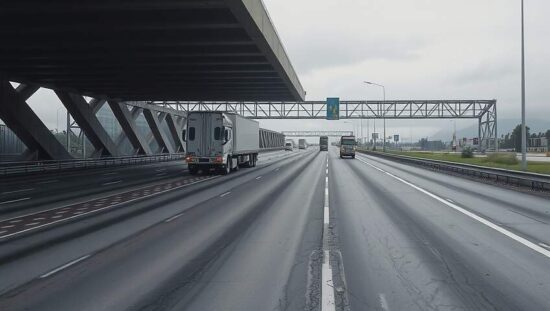Emerging Signals of Industrial Sector Ambivalence
Data released Friday by the Federal Statistical Office reveals a nuanced picture of Germany’s industrial performance, as reflected in truck toll usage on federal highways. While seasonally and calendar-adjusted truck toll mileage experienced a marginal increase of 0.3% in October 2025 compared to September, the figures paint a more complex narrative when viewed against the broader economic context.
Critically, the calendar-adjusted truck toll mileage index remains 0.9% below the levels recorded in October 2024. This discrepancy underscores a potential divergence between short-term fluctuations and underlying structural trends within the industrial sector.
The volume of truck traffic, subject to tolls for vehicles with four or more axles, is widely considered a leading indicator of industrial activity. The rationale is straightforward: economic expansion intrinsically generates and necessitates transport services. A clear correlation between the truck toll mileage index and key economic activity indices, particularly industrial production, is well-established.
However, the current figures provoke questions. While the October increase signals a possible rebound from previous slowdowns, the year-on-year decline suggests that the recovery may be fragile and uneven. Observers are now scrutinizing whether the marginal October rise represents a genuine surge in industrial output or merely a temporary correction following prior dips.
The data has reignited debate regarding the long-term health of Germany’s industrial base, particularly in light of ongoing concerns about global supply chains, rising energy costs and increasing international competition. Some analysts are pointing to these factors as potential constraints on sustained industrial growth, prompting a reassessment of government policies aimed at bolstering manufacturing competitiveness. The subtle nuances within the truck toll data are now serving as a key barometer for assessing the trajectory of Germany’s industrial future – and the challenges it faces.





